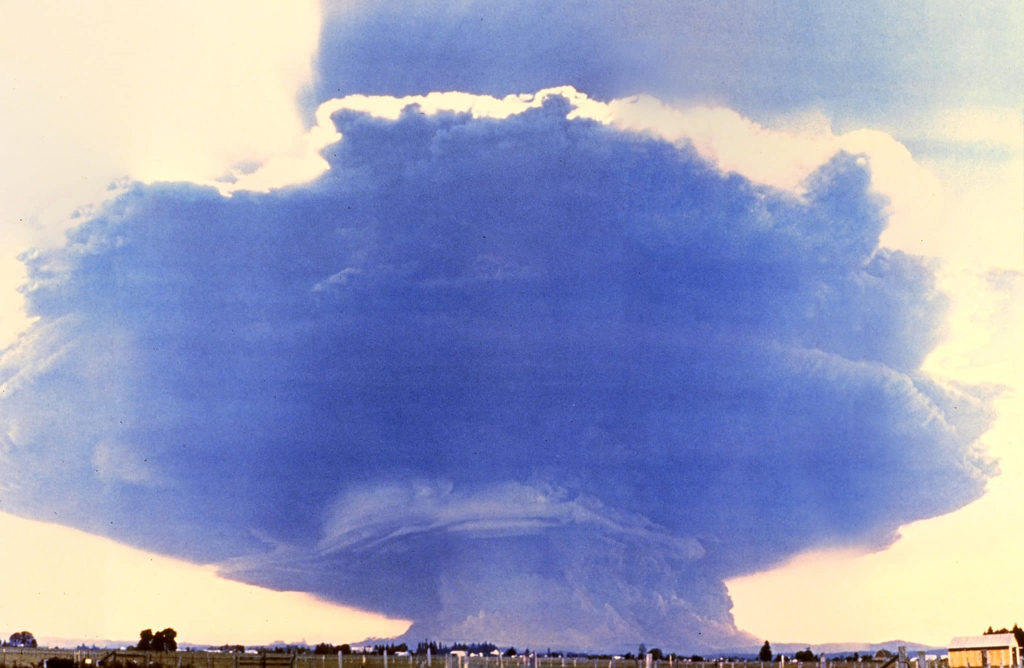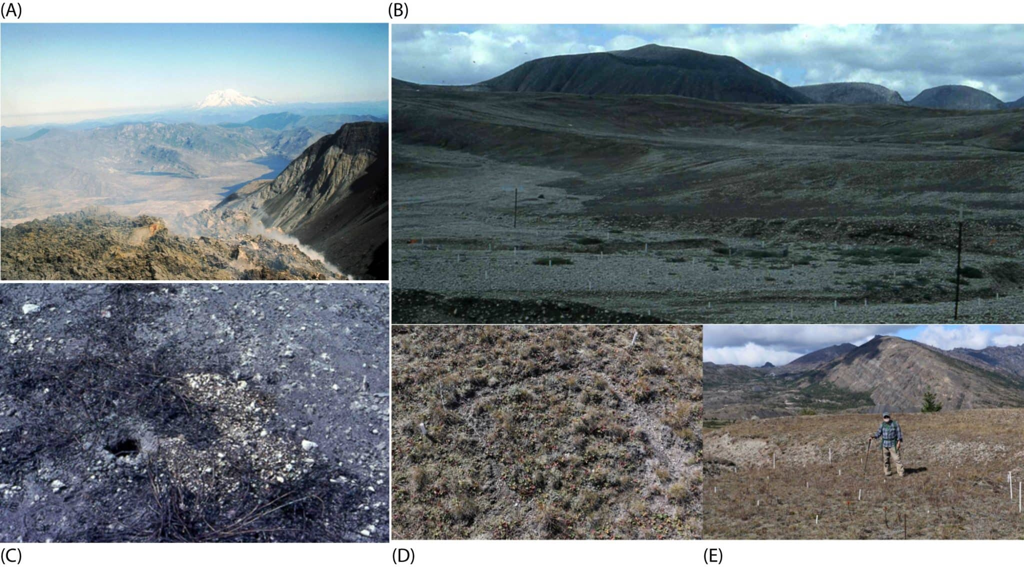Ground squirrels have rejuvenated the ecosystem following a volcanic eruption.
Volcanic ash, lava, and mudflows can transform landscapes beyond recognition—turning them into "lifeless deserts" and destroying habitats. For instance, ash covers vegetation, hindering the growth of young plants, which ultimately leaves herbivorous animals searching for new places to live due to a lack of food.
Moreover, volcanic eruptions affect the climate. On one hand, volcanoes release sulfur dioxide (SO2) into the atmosphere— a chemical compound that contributes to the formation of sulfate aerosols, which scatter radiation and cool the atmosphere and Earth's surface in the short term (for a few years). On the other hand, they influence precipitation levels even in areas far from the eruption sites, impacting not only nature but also human activities, such as agriculture.
Additionally, these cataclysms affect the soil, particularly the soil microorganisms that perform a sanitation function: they produce humus (organic matter containing nutrients essential for higher plants), release nutrients for plants, and retain moisture in the soil. During eruptions, these microorganisms may die and cease to reproduce.
Thus, volcanic eruptions hinder plant growth, disrupt soil microflora, and disturb the nutrient cycle, significantly affecting ecosystem recovery. This process can take hundreds of years, depending on the eruption's severity and the surrounding area. For example, it may take three centuries for a forest to regain its former shape and structure.
Scientists have long sought a method to restore landscapes after a cataclysm quickly, within just a few years or decades. It seems that a team of microbiologists and ecologists from the United States, led by Mia Maltz from the University of Connecticut, has found a solution.
The specialists conducted an experiment and discovered an unexpected ally in the fight for ecosystem revival. It turned out to be the pocket gopher (Thomomys talpoides)—a small rodent residing in the western United States and some provinces of Canada.
In 1980, the eruption of Mount St. Helens occurred in the northwestern United States. As a result of this cataclysm, people, numerous birds, and mammals lost their lives, and an area of about 600 square kilometers was transformed into a "lunar landscape."
Two years after the disaster, researchers airlifted pocket gophers to one of the affected areas—sections of Mount St. Helens covered with lifeless pumice—and placed them in special enclosures in regions where a forest once stood. The microbiologists aimed to observe whether these animals would play a crucial role in the rapid restoration of life on the desolate mountain slopes.

Why pocket gophers? It is known that these animals dig burrows, which they then use as nests and shelters, and during their digging, they bring nutrient-rich material to the soil surface.
The scientists hypothesized that the gophers' activities would promote the mixing of soil layers, returning beneficial microorganisms, buried under volcanic ash, to the surface. This, in turn, would facilitate the emergence of new plants.
After more than four decades, Maltz and her colleagues studied the microflora and chemical composition of the soil in the gopher enclosures, as well as conducted similar investigations in nearby affected areas where gophers were not introduced. The microbiologists also examined soil in other regions that were not as severely impacted by the 1980 eruption, specifically in plains where ancient forests once existed and areas logged prior to the cataclysm.

The researchers found that soils from different locations varied significantly from one another. For example, the soil affected by gophers contained a greater diversity of microorganisms than the areas previously occupied by ancient forests.
In particular, there was a surge of mycorrhizal fungi that settle on plant roots and form a symbiotic relationship with them. As a result of photosynthesis, plants store carbohydrates in their roots, which they then share with the mycelium, effectively nourishing it. In return, the fungi envelop the roots, allowing nutrients and water to flow to the plants. Additionally, fungi process beneficial substances, often releasing essential enzymes.
The underground activities of the gophers facilitated the spread of spores and mycelium, creating favorable conditions for the rooting and growth of plants in barren soil.
It is noteworthy that in the areas where the scientists introduced gophers, vigorous plant growth was observed just six years after the experiment began. During this time, tens of thousands of plants emerged. In contrast, the affected regions where the animals were not introduced remain nearly barren.
The authors of the study, published in the journal Frontiers in Microbiomes, emphasized that a similar approach could be utilized for forest regeneration after fires or logging. According to the scientists, 40 years for vegetation recovery is a blink of an eye compared to the several centuries required for a new forest to develop.